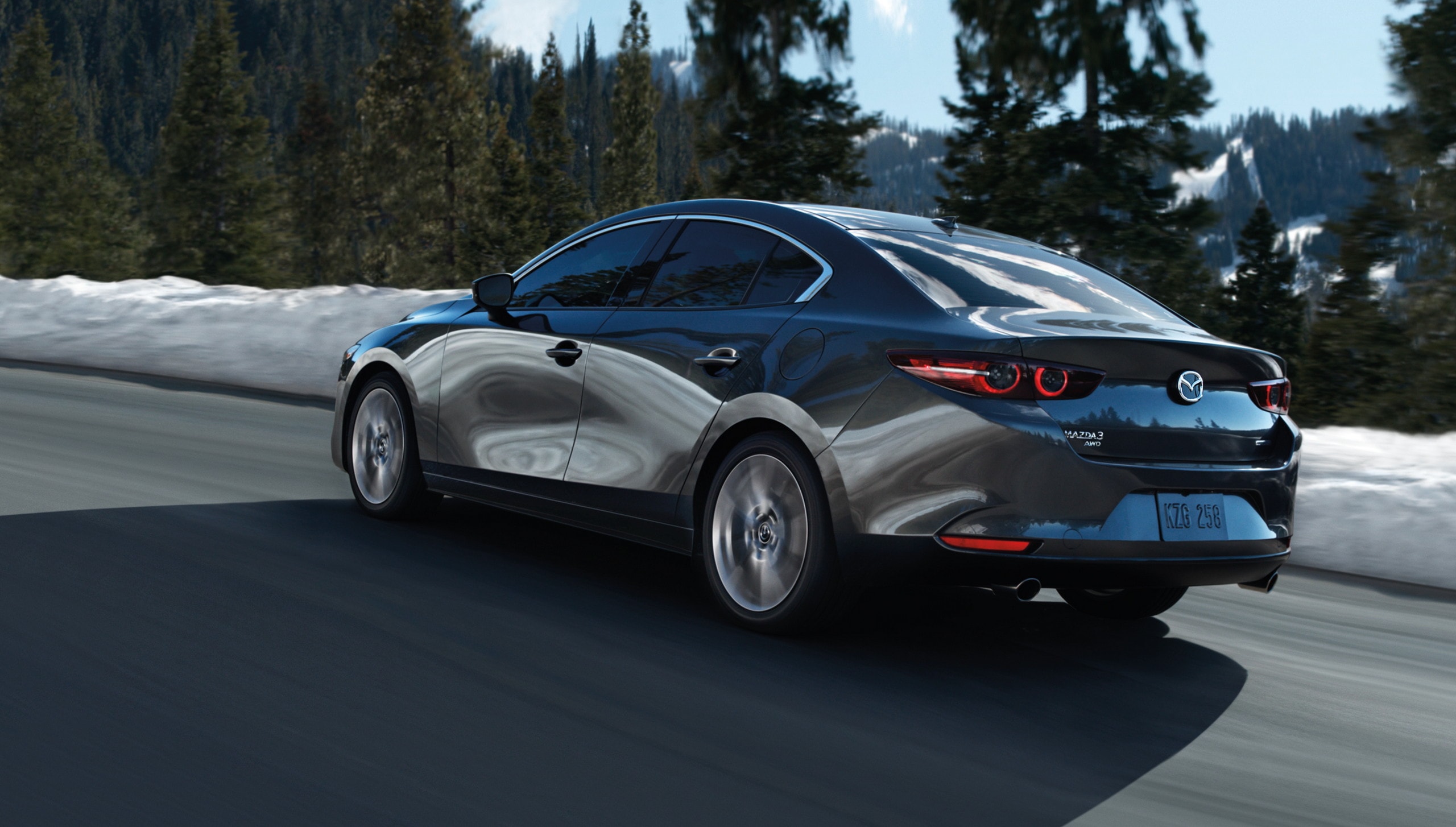The thrill of a sports car is undeniable—whether you’re an enthusiast or just tempted to experience the allure, there’s something unforgettable about the roar of the engine, the smooth curve of the design, and the pulse-quickening ride on an open road, track, or winding mountain pass. Sitting low to the ground in a sleek, finely-tuned machine brings a rush that makes all other thoughts fade away. The experience is exhilarating, liberating, and just plain fun, capturing the essence of adventure in a way few other cars can offer.
While the words “sports car” often bring to mind sky-high price tags that put these dream machines out of reach, there’s good news for those who are on a budget yet eager to join in on the excitement. It turns out that the market has a selection of sports cars that deliver heart-pounding speed, style, and driving pleasure without requiring you to break the bank, take out a second mortgage, or make extreme sacrifices to afford one.
These budget-friendly options allow drivers to access that classic sports car experience without an overwhelming cost, proving that you don’t need to sacrifice your finances for a day (or a lifetime) of fun on the road. So, if the idea of spending a day behind the wheel of a sports car sounds like a perfect plan, know that options exist to make it more attainable than ever. There’s a vehicle for every type of driver, even for those working within a modest budget.
10) 2000 Toyota MR2 Spyder
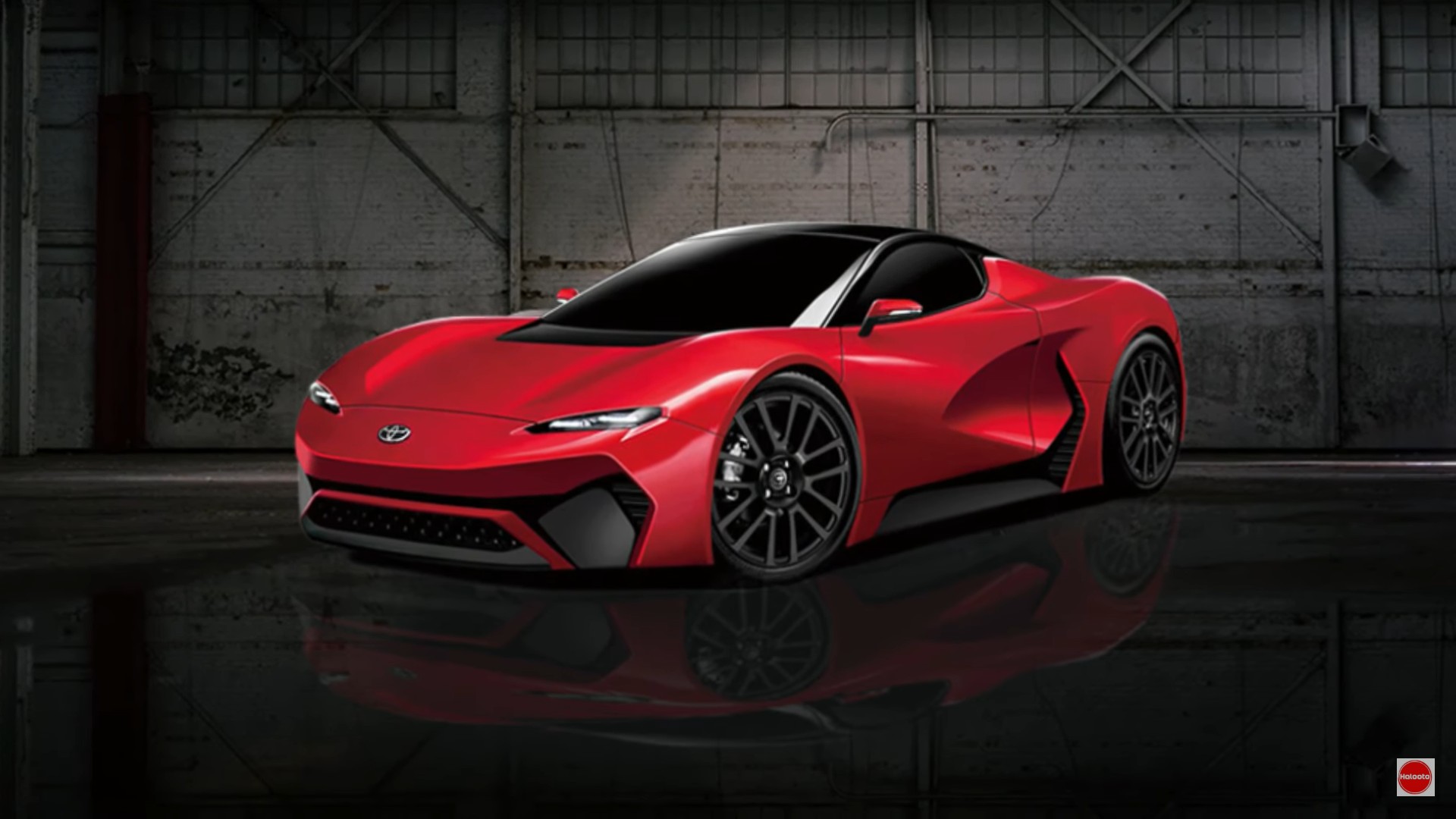
The 2000 Toyota MR2 Spyder is another standout in the affordable sports car scene, blending classic good looks with a great driving feel. Its low-slung, curvy design looks sharp with the roof down and still catches the eye in today’s market.
The MR2 Spyder’s mid-engine, rear-wheel-drive layout is ideal for handling, giving it exceptional balance and responsiveness. With a 1.8-liter, four-cylinder engine producing 138 horsepower, it’s not the fastest on a straight road, but it’s plenty quick for twisty routes. Perfect for those who want a well-rounded, enjoyable sports car experience, the MR2 Spyder is a fantastic option that delivers both style and fun for a budget-conscious driver.
The Toyota MR2 Spyder, also known as the Toyota MR-S in some markets, is a compact, mid-engine roadster that has garnered a dedicated following since its introduction in 2000. As the third iteration of the MR2 lineup, the Spyder was designed to bring back the spirit of lightweight, agile sports cars while offering a modern take on the classic roadster format. Combining sleek styling, engaging performance, and Toyota’s reputation for reliability, the MR2 Spyder quickly became a favorite among driving enthusiasts and casual drivers alike.
One of the standout features of the MR2 Spyder is its mid-engine layout, a configuration that enhances its handling dynamics and provides a unique driving experience. Positioned just behind the seats, the engine contributes to a balanced weight distribution, allowing for agile cornering and precise steering response.
The MR2 Spyder is powered by a 1.8-liter four-cylinder engine that produces approximately 138 horsepower. While this power output may not seem overwhelming by modern standards, the car’s lightweight construction, tipping the scales at around 2,200 pounds, allows it to accelerate briskly and maintain an enjoyable level of performance. The standard five-speed manual transmission provides an engaging driving experience, while a six-speed automatic option is available for those who prefer a more relaxed driving style.
The design of the MR2 Spyder is characterized by its modern, aerodynamic shape and sporty lines. With its low stance and aggressive front fascia, the Spyder exudes an air of athleticism that draws attention on the road. The retractable soft top can be operated manually, allowing drivers to enjoy the open-air experience on demand.
The interior, though compact, is designed with a driver-focused layout, featuring supportive seats and a straightforward dashboard. While the materials used in the cabin may not rival those found in luxury sports cars, they are functional and durable, reflecting Toyota’s commitment to quality.
In terms of driving dynamics, the MR2 Spyder truly shines. The mid-engine configuration not only enhances the car’s balance but also allows for exceptional handling capabilities. The steering is responsive, providing the driver with excellent feedback, and the well-tuned suspension absorbs bumps and maintains composure during spirited driving.
This combination of lightweight construction and engaging dynamics makes the MR2 Spyder a joy to drive on winding roads or during spirited track sessions. Its ability to find corners with precision has earned it praise from automotive enthusiasts who appreciate its sporty character.
Another appealing aspect of the MR2 Spyder is its affordability and accessibility. As a used car, it represents a great value for those seeking a fun, lightweight sports car without the high price tag often associated with performance vehicles. The MR2 Spyder’s reputation for reliability is a significant selling point, as many owners report minimal maintenance issues over the years. This dependability, combined with the car’s engaging performance, makes it an attractive option for those entering the sports car market or looking for a weekend driver.
While the MR2 Spyder has many strengths, it does have some limitations that potential buyers should consider. The compact interior may feel cramped for taller drivers, and the cargo space is limited due to the mid-engine layout. The trunk space, while adequate for a couple of bags, is not suitable for extensive road trips or carrying large items. Additionally, the absence of certain modern features, such as advanced infotainment systems and driver assistance technologies, may be a drawback for buyers accustomed to more contemporary vehicles.
The MR2 Spyder has also gained a reputation in the automotive community for its tuning potential. Enthusiasts often modify their vehicles to enhance performance, whether through aftermarket exhaust systems, suspension upgrades, or engine tuning. This vibrant aftermarket support allows owners to personalize their cars to their tastes, making the MR2 Spyder not just a vehicle but a platform for creativity and expression within the car enthusiast community.
In motorsport, the MR2 Spyder has seen some participation in amateur racing and track days, where its lightweight nature and mid-engine layout contribute to an exciting driving experience. Enthusiasts appreciate its capability on the track, as well as its potential for competitive driving. This involvement in motorsports further cements the MR2 Spyder’s status as a driver’s car, appealing to those who seek both performance and enjoyment behind the wheel.
The Toyota MR2 Spyder’s legacy endures among automotive enthusiasts, with a dedicated community celebrating its performance and unique design. As the years have passed, the MR2 Spyder has become a sought-after classic, with well-maintained examples commanding respect at car shows and enthusiast gatherings. Its mid-engine layout and engaging driving dynamics continue to attract attention, ensuring that the MR2 Spyder remains a beloved choice for those who appreciate the thrill of driving a true sports car.
Looking toward the future, the MR2 nameplate has sparked speculation about a potential revival within Toyota’s lineup. As the market for sports cars evolves, the idea of a modern MR2 has garnered interest from enthusiasts who wish to see a fresh interpretation of the beloved model. While no official announcements have been made, the legacy of the MR2 Spyder continues to inspire discussions among automotive fans, showcasing its lasting impact on the sports car segment.
The Toyota MR2 Spyder stands as an iconic representation of the compact sports car, offering a compelling blend of performance, style, and driving enjoyment. Its mid-engine layout, lightweight construction, and engaging driving dynamics create a thrilling experience for those behind the wheel.
While it may have limitations in terms of interior space and modern features, the MR2 Spyder’s reputation for reliability and performance makes it an attractive option for enthusiasts seeking a fun and affordable sports car. The enduring appeal of the MR2 Spyder ensures that it will always hold a special place in the hearts of driving enthusiasts, celebrating the joy of open-air motoring and spirited performance. Whether reminiscing about its storied past or anticipating its potential revival, the Toyota MR2 Spyder remains a beloved name in the automotive world.
9) Toyota Celica
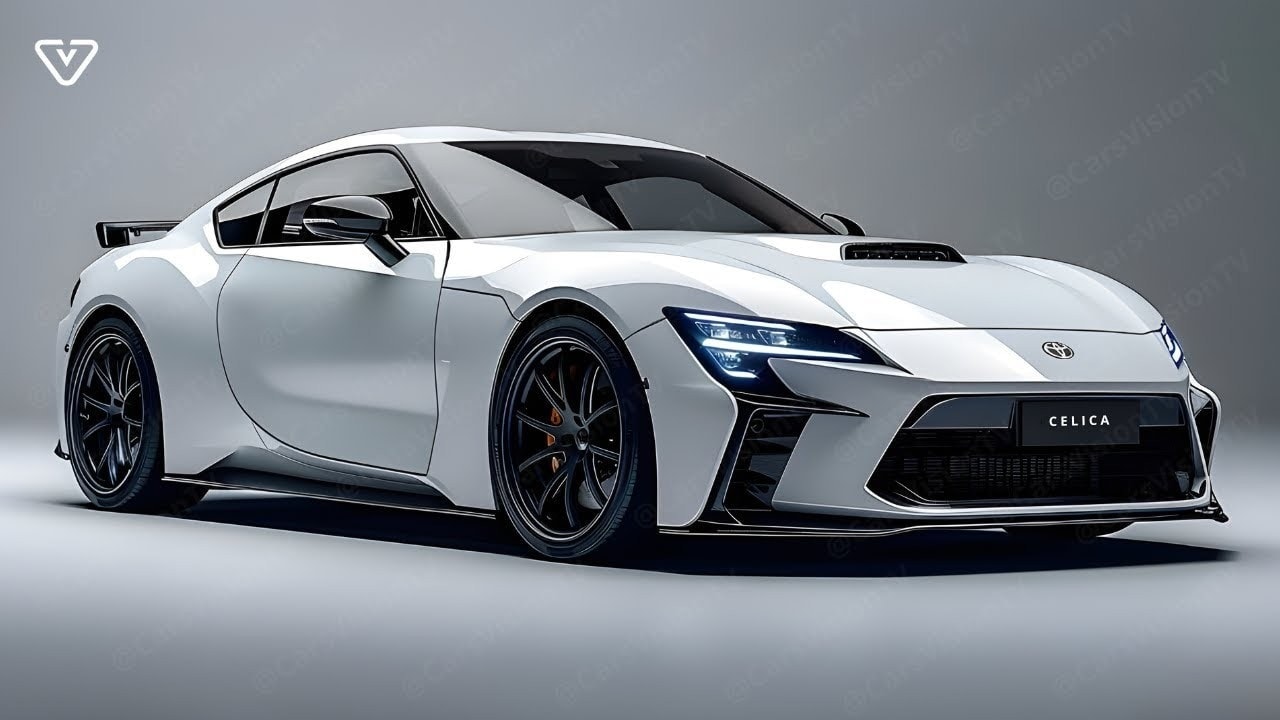
Since its launch in the early 1970s, the Toyota Celica has been a popular, accessible sports car, originally created to compete with American muscle cars like the Mustang, Camaro, and Firebird. It quickly became a success in the U.S. market, even impacting the sales of its American competitors. But if you’re hoping for an early model Celica under $20,000, it’s not likely; those vintage models are rare finds today.
The later models of the Celica, particularly the final 2005 generation, offer an affordable way to experience a piece of the Celica legacy. Its aerodynamic design, low stance, and sporty feel make it a favorite among fans of lightweight, nimble cars. While it may not deliver massive power in a straight line, the Celica shines in the corners. The GT model’s 1.8-liter, four-cylinder engine generates 140 horsepower, while the GT-S steps it up with 180 horsepower, making it agile and engaging on country roads.
The Toyota Celica is a legendary nameplate in the automotive world, known for its blend of sporty performance, stylish design, and affordability. First introduced in 1970, the Celica has undergone several transformations over its long production run, lasting until 2005.
Initially conceived as a compact coupe, the Celica quickly gained popularity for its spirited performance and appealing aesthetics, making it a favorite among car enthusiasts and everyday drivers alike. Over the years, the Celica evolved from a simple, practical vehicle into a more performance-oriented sports car, appealing to a broad range of consumers seeking style and excitement.
The first-generation Celica, produced from 1970 to 1977, featured a design inspired by the classic fastback silhouette, capturing the essence of a sporty coupe. It was equipped with a 1.6-liter four-cylinder engine, producing around 108 horsepower, which offered a decent balance of performance and fuel efficiency for the era.
The Celica quickly established a reputation for its nimble handling and responsive driving dynamics, making it a popular choice among younger drivers. As Toyota aimed to penetrate the growing sports car market, the Celica laid the groundwork for future generations with its engaging driving experience and affordability.
As the years went by, the Celica continued to evolve, adopting more aggressive styling and advanced technology. The second generation, produced from 1978 to 1981, introduced a slightly larger platform and a more powerful engine option, enhancing performance and comfort. The third-generation Celica, launched in 1982, further refined the formula with a focus on aerodynamics, incorporating a more modern design and improved handling characteristics. This generation also marked the introduction of all-wheel drive in some models, paving the way for a more performance-oriented approach.
The fourth generation, introduced in 1989, showcased a bold new design that captured the attention of enthusiasts. It featured a sportier profile and was available with a range of engines, including a turbocharged 2.0-liter variant that produced an impressive 190 horsepower. This generation was well-received for its sharp handling and responsive performance, establishing the Celica as a serious contender in the sports car market. The addition of features such as a rear spoiler and sport-tuned suspension further emphasized its sporty credentials, attracting a dedicated fan base.
The fifth generation, produced from 1994 to 1999, saw the Celica undergo a significant transformation in both design and performance. This iteration embraced a more aggressive and aerodynamic styling, giving it a modern look that appealed to a younger audience.
The Celica GT-S model, equipped with a 1.8-liter four-cylinder engine producing 178 horsepower, delivered exhilarating performance, thanks to its lightweight construction and well-tuned suspension. The Celica’s reputation as a performance-oriented vehicle was solidified during this generation, further enhancing its allure among driving enthusiasts.
One of the standout features of the Celica was its success in motorsport. The Celica became a dominant force in rally racing during the late 1980s and early 1990s, particularly in the World Rally Championship (WRC). The Celica GT-Four, equipped with all-wheel drive and a turbocharged engine, achieved remarkable success on the rally circuit, showcasing Toyota’s engineering prowess and commitment to performance. This motorsport heritage contributed to the Celica’s image as a performance-oriented vehicle, further appealing to consumers seeking a sporty driving experience.
The sixth generation of the Celica, launched in 1999, continued the trend of performance and style, featuring a more refined design and improved technology. The Celica GT model was equipped with a 1.8-liter four-cylinder engine producing 140 horsepower, while the GT-S variant featured a more powerful version of the same engine, offering a thrilling driving experience.
The introduction of features like a rear spoiler, sport-tuned suspension, and a vibrant interior design further enhanced the Celica’s sporty appeal. However, as the automotive shifted, the Celica faced increased competition from other compact sports cars, prompting Toyota to adapt its strategy.
Despite its impressive legacy, the Celica’s production was discontinued in 2005, marking the end of an era for the iconic nameplate. The decision to phase out the Celica came as Toyota shifted its focus toward more practical and fuel-efficient vehicles, reflecting changing consumer preferences in the automotive market. While the Celica may have been retired, its impact on the sports car segment remains undeniable, with a dedicated community of enthusiasts who continue to appreciate its performance capabilities and unique character.
The Celica’s design, characterized by its sleek lines and sporty aesthetics, has aged gracefully over the years. Classic models are often sought after by collectors and enthusiasts, with well-maintained examples commanding respect at car shows and meets. The Celica’s lightweight construction, rear-wheel drive, and engaging driving dynamics make it a favorite among those who appreciate the thrill of driving a sporty coupe. The aftermarket support for the Celica is also notable, with a wide range of modifications and upgrades available, allowing owners to personalize their vehicles to suit their preferences.
In recent years, there has been speculation about a potential revival of the Celica nameplate, as Toyota seeks to re-enter the compact sports car market. Enthusiasts have long expressed their desire for a modern interpretation of the Celica, combining the brand’s reputation for reliability with sporty performance and contemporary design. While nothing has been officially confirmed, the legacy of the Celica continues to inspire discussions among automotive enthusiasts, demonstrating the enduring appeal of this iconic model.
The Toyota Celica remains a beloved symbol of sporty performance and stylish design. With its rich history and diverse range of models, the Celica has left an indelible mark on the automotive. From its early days as a compact coupe to its evolution into a performance-oriented sports car, the Celica embodies Toyota’s commitment to engineering excellence and innovation.
Today, it stands as a testament to the joy of driving, capturing the hearts of enthusiasts who appreciate its unique character and spirited performance. Whether remembered for its motorsport heritage or celebrated for its stylish design, the Celica continues to resonate with those who seek a thrilling driving experience combined with practicality and reliability. The enduring legacy of the Celica ensures that it will always hold a special place in the hearts of car enthusiasts around the world.
8) Mazda MX-5 Miata NA
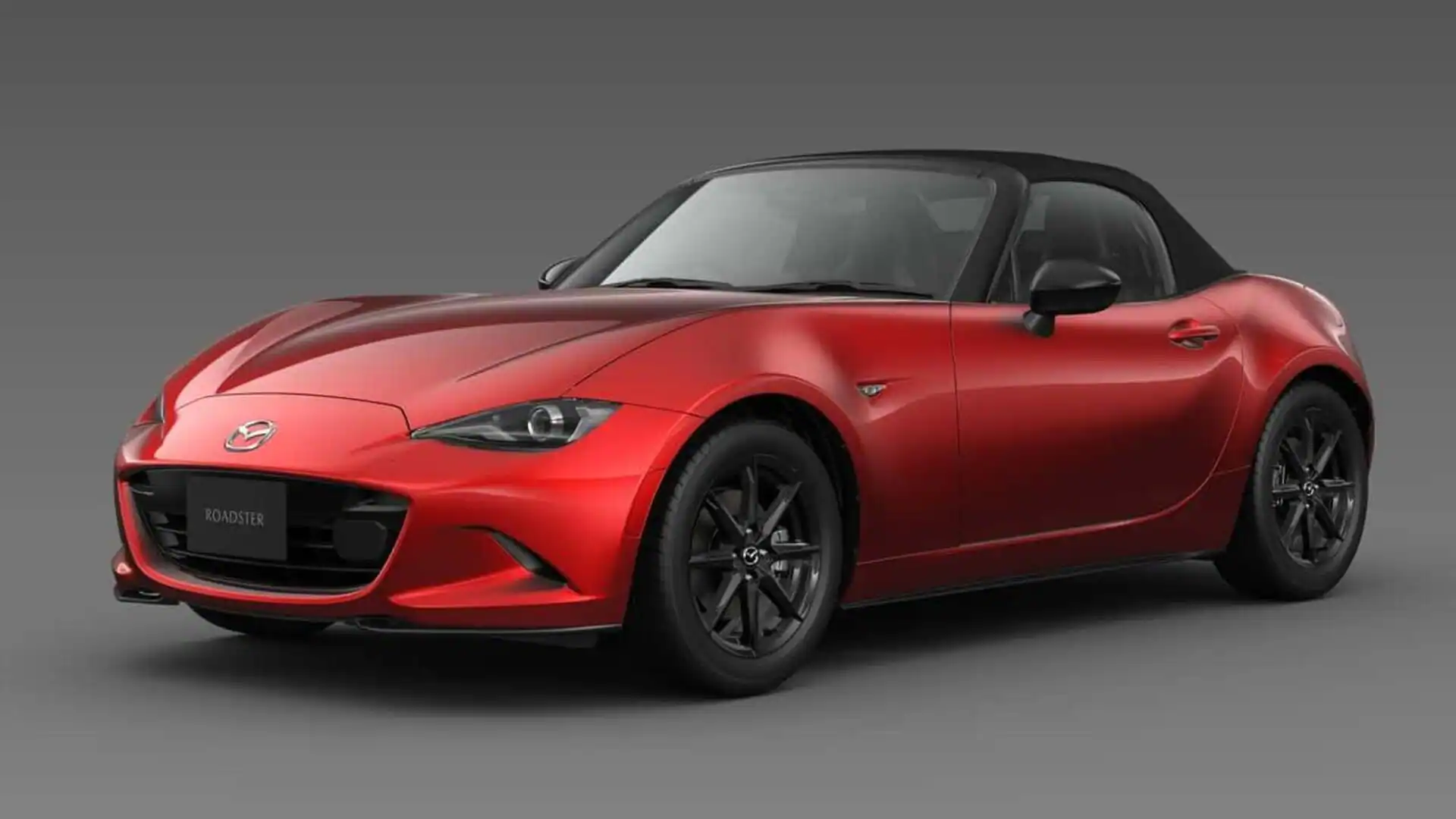
A sports car icon, the Mazda MX-5 Miata NA is one of the ultimate budget-friendly choices for driving enthusiasts. No list of affordable sports cars would be complete without it. First released in 1989, this classic Mazda is everything a sports car should be—stylish, low to the ground, and agile through corners. It’s a true driver’s car, delivering a satisfying, balanced feel on the road that has earned it an enduring reputation among sports cars.
With its front-engine layout and rear-wheel-drive setup, the Miata has charmed drivers for decades. The MK1 version, with its signature pop-up headlights and rounded front end, captures the essence of a sports car, making it instantly recognizable. It’s powerful enough to thrill drivers but accessible and enjoyable for all. Even today, the Miata stands out as a car that delivers pure driving pleasure on both roads and tracks, introducing countless drivers to the joy of a genuine sports car experience.
7) 2011 Mazda RX-8
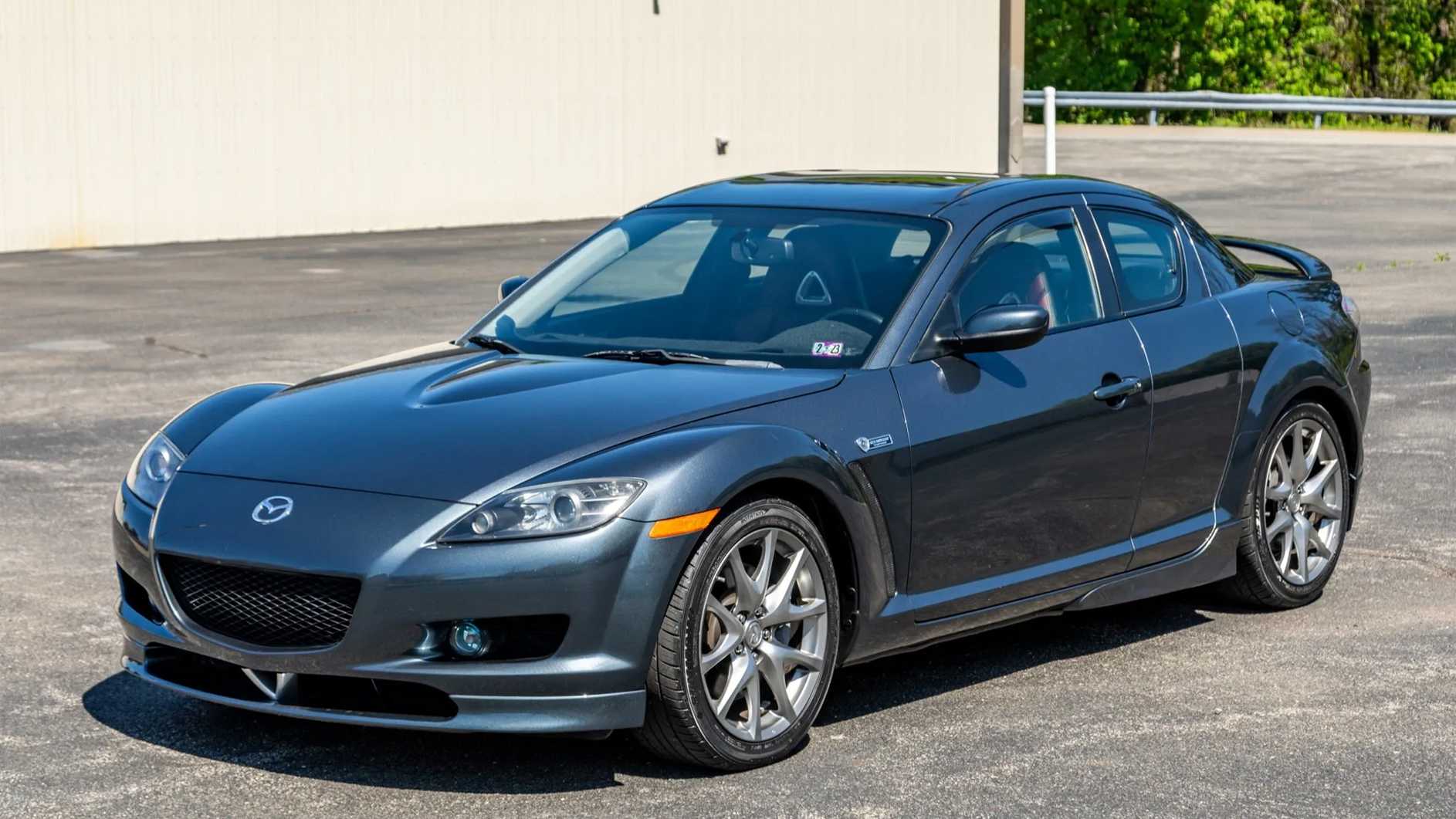
The 2011 Mazda RX-8 stands out as the only rotary-engine vehicle on our list. This unique 1.3-liter rotary engine is celebrated for high-revving power, delivering 230 horsepower but with a modest 159 lb-ft of torque. While low-end power may feel lacking, the thrill of high-speed performance more than compensates. The RX-8 demands frequent oil checks and has a higher oil consumption than typical gas engines, but many enthusiasts find it well worth the extra maintenance.
Mazda’s sleek, unconventional design of the RX-8 gives it a distinct appearance, enhanced by its low ride, which contributes to excellent handling. It may not be everyone’s everyday car, but for spirited drives and high-revving fun, the RX-8 is unmatched. Mazda’s ingenuity with the RX-8’s rotary engine created an experience as unique as the car itself.
6) Pontiac Solstice
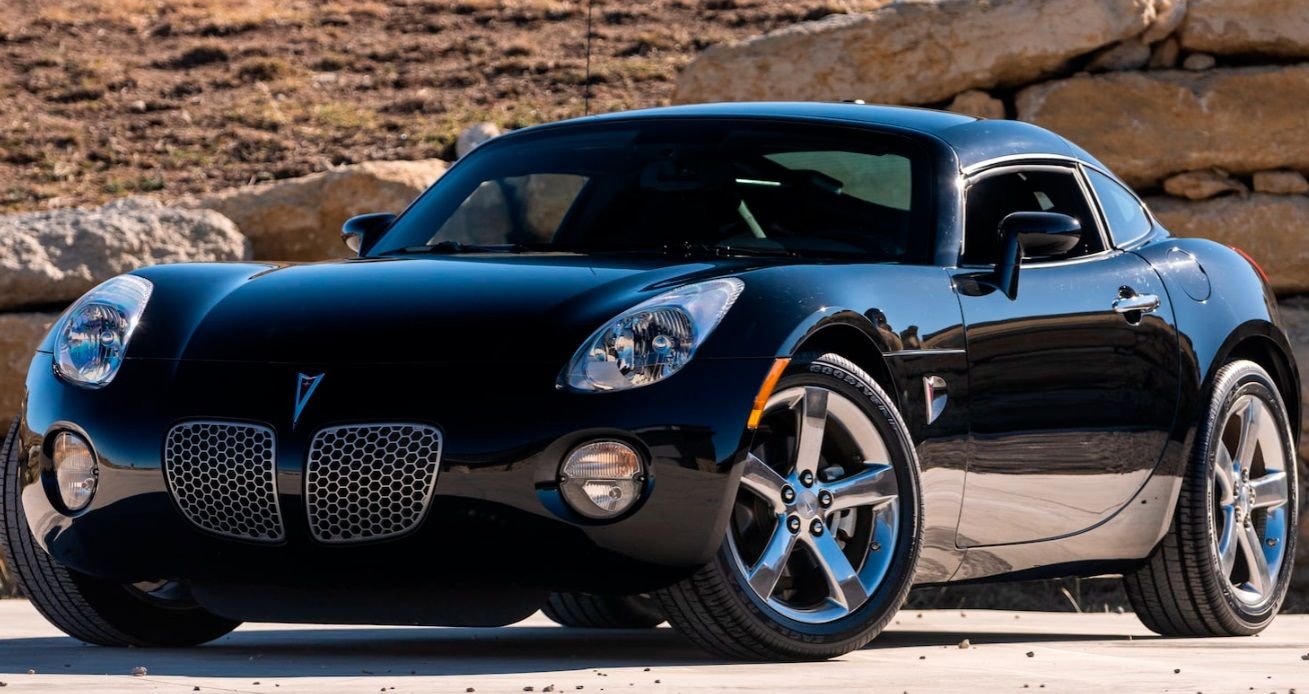
The 2006 Pontiac Solstice, with its long hood, curvaceous design, and distinctive low-scooped front grille, is both eye-catching and polarizing. While its looks are unique, this convertible’s 2.4-liter, naturally aspirated 4-cylinder engine produces a modest 177 horsepower, reaching 60 mph in 7.2 seconds. Despite not being the fastest, the Solstice’s rear-wheel-drive setup makes it well-suited for twisty canyon roads and delivers decent handling.
Though often overlooked, the Solstice provides drivers with a rare mix of uniqueness and rear-wheel-drive performance. With a top speed of 155 mph and a personality that sets it apart, the Solstice remains a niche favorite for enthusiasts who value individuality over mainstream appeal.
The Pontiac Solstice, a compact sports car produced by General Motors under the Pontiac brand, made its debut in 2005 and quickly garnered attention for its sleek design and engaging driving experience.
As part of Pontiac’s revitalization efforts in the mid-2000s, the Solstice was introduced to compete in the growing market for affordable sports cars, primarily targeting younger enthusiasts and those seeking a fun, open-top driving experience. With its striking appearance, rear-wheel-drive layout, and responsive handling, the Solstice positioned itself as an attractive option for buyers looking for a sporty vehicle that offered both performance and style.
At the heart of the Pontiac Solstice is a 2.4-liter four-cylinder engine that produces approximately 173 horsepower. This powerplant provides lively acceleration and a spirited driving experience, particularly when paired with the standard five-speed manual transmission.
The optional five-speed automatic transmission offers ease of use for those who prefer a more relaxed driving style. Despite its modest power output, the Solstice is remarkably lightweight, which enhances its performance characteristics. The car’s nimbleness is further complemented by its precise steering and well-tuned suspension, delivering an engaging and enjoyable driving experience that is often described as pure and exhilarating.
The design of the Pontiac Solstice is one of its most appealing features. With a low, wide stance and curvaceous bodywork, the Solstice exudes a sense of athleticism and modernity. The front fascia is characterized by its bold grille and distinctive headlights, creating an aggressive look that sets it apart from other compact sports cars. The long hood and short rear deck give the Solstice a classic sports car profile, while the overall silhouette is enhanced by sleek lines and subtle curves. The design not only captures attention on the road but also reflects Pontiac’s commitment to producing vehicles with a sporty and dynamic aesthetic.
Inside, the Solstice prioritizes the driver’s experience with a straightforward and functional layout. The cockpit is driver-focused, with all essential controls easily accessible. While the materials used in the interior may not rival those found in higher-end sports cars, they are durable and designed to withstand the rigors of everyday use. The seating position is low, providing a true sports car feel, and the supportive seats help to keep occupants secure during spirited driving.
However, it’s worth noting that the cabin is somewhat snug, especially for taller drivers or passengers. The Solstice’s convertible top can be operated manually or via an optional power mechanism, allowing for a quick transformation from a closed coupe to an open-air sports car, adding to the overall enjoyment of driving.
The Pontiac Solstice also offers a range of features that enhance the driving experience. Available options include a premium audio system, Bluetooth connectivity, and upgraded infotainment options, making it a practical choice for daily use as well as weekend adventures. The audio system delivers good sound quality, ensuring that drivers can enjoy their favorite tunes while cruising with the top down. Despite being a compact sports car, the Solstice provides adequate trunk space for small bags or weekend gear, making it a more versatile option for those who want a car that can handle both leisure and practicality.
In terms of safety, the Pontiac Solstice comes equipped with essential safety features, including front airbags, side-impact airbags, and anti-lock brakes. While the Solstice received decent safety ratings for its class, it is essential for potential buyers to keep in mind that newer vehicles often come equipped with more advanced safety technologies, such as lane departure warning and automatic emergency braking. However, the Solstice’s solid construction and relatively low weight contribute to its overall safety performance, providing a reassuring driving experience for those behind the wheel.
Despite its many strengths, the Pontiac Solstice has its limitations. One of the most significant drawbacks is the limited rear storage space, which can make it less practical for those who frequently travel with multiple passengers or require additional cargo capacity. While the two-seat configuration is perfect for driving enthusiasts, it may not suit everyone’s needs, particularly families or those needing to carry larger items. Additionally, the Solstice’s performance, while enjoyable, may not compete with more powerful sports cars on the market, which could deter buyers seeking higher levels of performance.
The Pontiac Solstice has aged well and continues to be appreciated by automotive enthusiasts for its unique design and engaging driving dynamics. As a used car option, the Solstice presents an excellent opportunity for buyers seeking an affordable sports car with character. Many owners praise the vehicle’s reliability and performance, often noting that it provides a thrilling driving experience without breaking the bank. Resale values have remained relatively stable, making it an accessible option for those wanting to enter the sports car market without the high costs associated with more premium brands.
The Solstice was also available in a more powerful variant, the Solstice GXP, introduced in 2007. The GXP featured a turbocharged 2.0-liter four-cylinder engine that produced 260 horsepower, significantly enhancing the car’s performance capabilities.
This model received accolades for its sharp handling and increased power, making it a favorite among driving enthusiasts who craved a more exhilarating experience. The GXP variant also featured upgraded suspension components and larger brakes, further refining the Solstice’s dynamics and solidifying its status as a serious contender in the compact sports car market.
As the years have passed, the Pontiac brand itself has faced challenges, culminating in its discontinuation in 2010. This adds a layer of uniqueness to the Solstice, as it represents a bygone era of American automotive design and innovation. Collectors and enthusiasts often seek out the Solstice as a symbol of Pontiac’s legacy, and its limited production numbers contribute to its desirability among sports car aficionados. The vehicle embodies a spirit of freedom and enjoyment, appealing to those who appreciate the thrill of driving.
The Pontiac Solstice stands as an iconic representation of affordable American sports cars. With its striking design, engaging performance, and enthusiastic driving dynamics, the Solstice offers a compelling choice for buyers looking for a fun and stylish vehicle.
While it may have its limitations in terms of practicality and space, its unique character and driving experience more than make up for these shortcomings. The Solstice serves as a reminder of Pontiac’s commitment to producing vehicles that resonate with driving enthusiasts and continue to be celebrated for their performance and style. For those in the market for a spirited sports car that offers both excitement and value, the Pontiac Solstice remains a standout choice in the automotive.
5) Scion FR-S
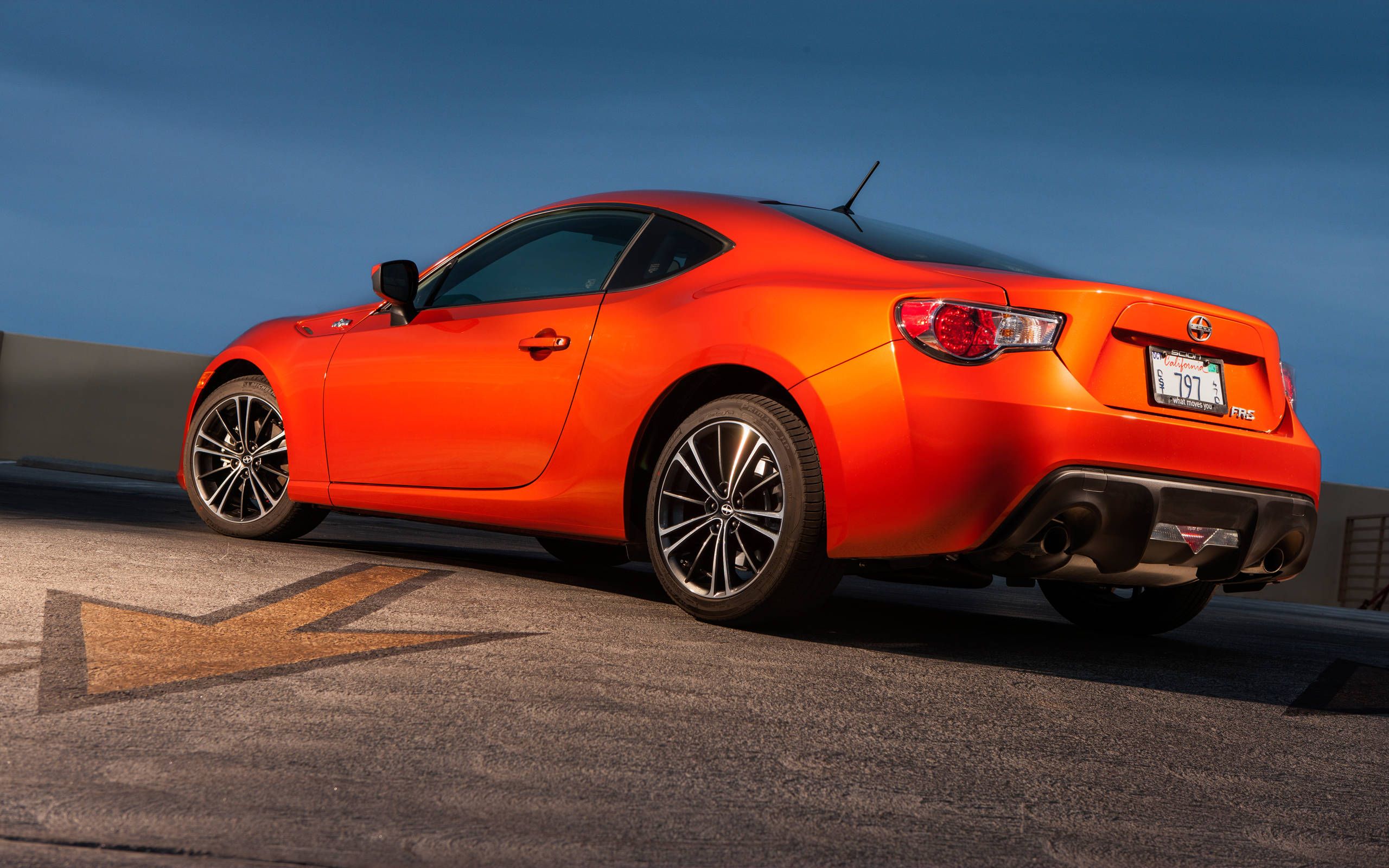
The Scion FR-S shares much of its DNA with the Subaru BRZ, including a high-revving 2.0-liter flat-four engine. Lightweight, agile, and equipped with a playful chassis, the FR-S delivers on the excitement front, making it a joy on tracks or winding roads. Though its practicality as a daily driver is limited by minimal cargo space and a modest interior, it shines as a pure sports car.
Toyota continuously refined the FR-S, with models like the 2015 version featuring recalibrated rear shocks and a stiffer front suspension for reduced body roll and enhanced stability. The FR-S was discontinued in 2016, giving way to the Toyota 86 in 2017, but it remains a beloved option for driving enthusiasts looking for affordable, responsive thrills.
4) 2010 Hyundai Genesis Coupe
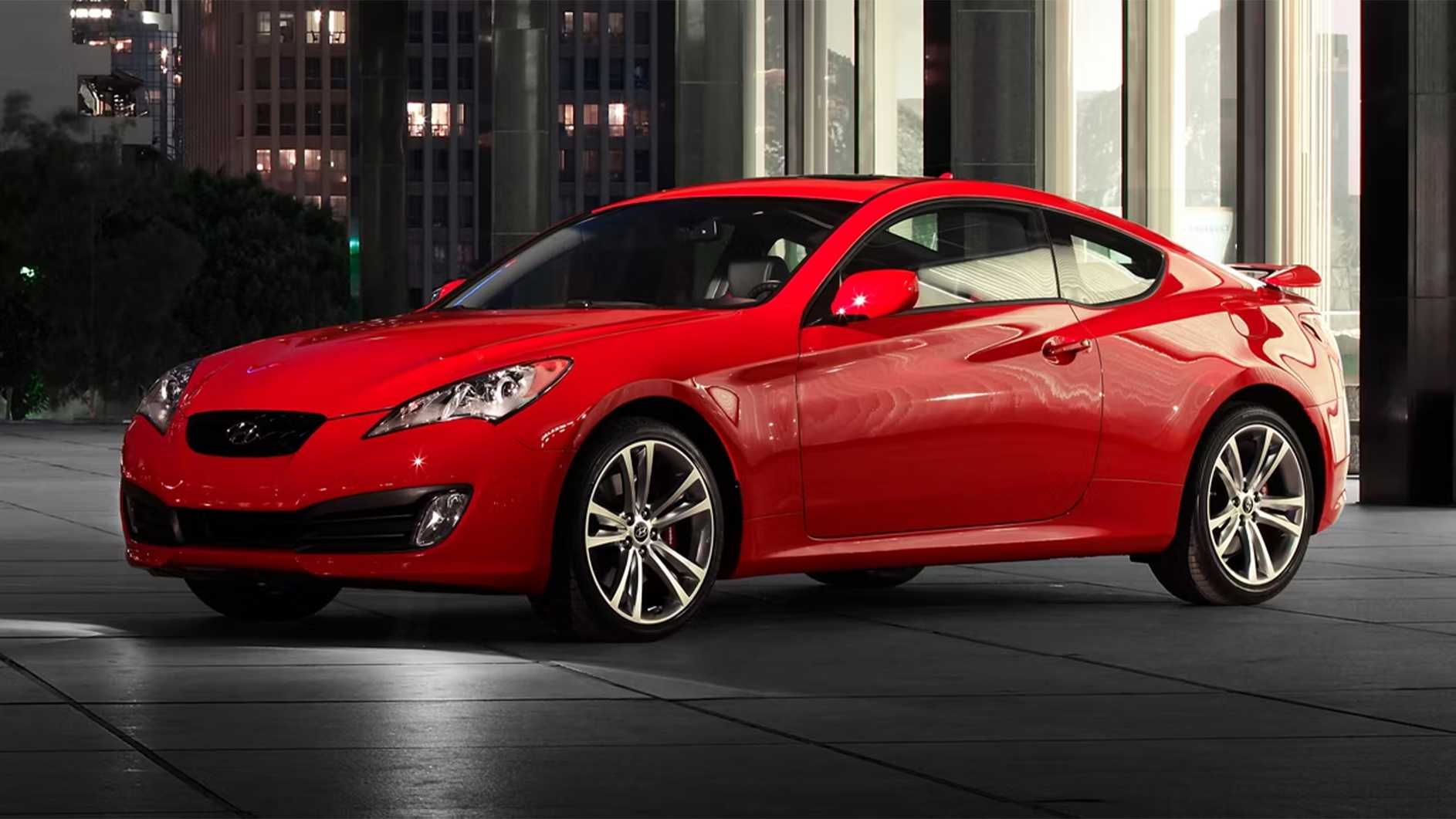
Sleek, low, stylish, comfortable, and exciting to drive—the Hyundai Genesis Coupe ticks all the boxes for sports car enthusiasts. But beyond its sporty appeal, the Genesis Coupe is practical enough for daily tasks like grocery shopping. With a spacious trunk and four seats, it allows drivers to share their love of driving with friends or family.
The Genesis Coupe offers a range of options, with six configurations available in manual and automatic transmissions. This variety provides something for everyone, whether you prefer tight cornering or powerful acceleration. With its versatility and stylish design, the Genesis Coupe delivers both performance and practicality at an affordable price.
The Hyundai Genesis, first introduced in 2008, marked the South Korean automaker’s ambitious entry into the luxury sedan market. Positioned as a flagship model for Hyundai, the Genesis aimed to compete with established luxury brands while offering a blend of performance, comfort, and advanced features.
Available in both rear-wheel and all-wheel-drive configurations, the Genesis stands out for its refined driving experience and elegant design, appealing to buyers seeking a luxury sedan without the premium price tag associated with more established brands.
Under the hood, the Hyundai Genesis offers a range of powerful engines, with options including a 3.8-liter V6 and a robust 5.0-liter V8 in later models. The V6 engine produces around 311 horsepower, delivering strong acceleration and responsive handling.
The available 5.0-liter V8 ups the ante with a remarkable 420 horsepower, providing exhilarating performance that rivals competitors in the luxury sedan segment. The eight-speed automatic transmission seamlessly shifts gears, enhancing the driving experience and allowing for smooth acceleration. This impressive powertrain lineup ensures that the Genesis delivers both the comfort expected from a luxury sedan and the spirited performance desired by driving enthusiasts.
The Genesis is built on a sturdy platform that contributes to its confident handling and ride quality. The suspension system is tuned to strike a balance between sportiness and comfort, allowing the car to absorb bumps and imperfections in the road while maintaining a composed demeanor.
The steering is precise, providing good feedback to the driver, which enhances the overall driving experience. Whether finding city streets or cruising on the highway, the Genesis remains planted and responsive, offering a level of handling that is commendable for a vehicle in its class. This combination of performance and comfort makes it an excellent choice for those who value a smooth and engaging ride.
Inside, the Hyundai Genesis is a testament to luxury and refinement. The cabin is spacious, providing ample headroom and legroom for both front and rear passengers. High-quality materials, including soft-touch plastics, leather upholstery, and wood accents, create an upscale environment that rivals more expensive competitors.
The front seats are supportive and adjustable, ensuring a comfortable driving position for long journeys. Additionally, the rear seats offer generous space, allowing adult passengers to travel comfortably without feeling cramped. The Genesis is designed with attention to detail, making it a pleasant place to spend time.
The infotainment system in the Genesis is user-friendly, featuring a large touchscreen display that integrates navigation, Bluetooth connectivity, and audio controls. The available premium sound system, often supplied by Lexicon, delivers exceptional audio quality, making it a great choice for audiophiles. Apple CarPlay and Android Auto integration allow for seamless smartphone connectivity, providing access to apps and music while driving. While some newer vehicles may offer more advanced technology features, the Genesis’s infotainment system remains functional and responsive, enhancing the overall driving experience.
Safety is a critical aspect of the Genesis, and it comes equipped with a comprehensive suite of safety features. Advanced technologies, such as adaptive cruise control, blind-spot monitoring, lane departure warning, and forward collision warning with automatic emergency braking, contribute to a confident driving experience. The Genesis has received high marks in crash tests, underscoring its commitment to passenger safety. These features not only enhance driver confidence but also provide peace of mind for those traveling with family or friends.
Despite its many strengths, the Hyundai Genesis does have a few drawbacks. While it excels in providing a luxurious experience, it may not have the same brand prestige as established luxury manufacturers like BMW or Mercedes-Benz. Some buyers might perceive it as a less desirable option due to brand recognition, even if the car itself offers comparable features and performance.
Additionally, while the handling is commendable for a luxury sedan, it may not match the athleticism of some sportier competitors. The Genesis leans more towards comfort and refinement, which could be a consideration for buyers seeking a more performance-oriented vehicle.
The exterior design of the Genesis is elegant and sophisticated, featuring smooth lines and a bold front grille that exudes luxury. The sleek silhouette and well-proportioned body contribute to its upscale appearance, making it a head-turner on the road. LED headlights and taillights add a modern touch, enhancing visibility while improving the vehicle’s overall aesthetic appeal.
The Genesis’s design has aged gracefully, maintaining its relevance in a competitive market filled with stylish luxury sedans. Its understated elegance is a significant draw for buyers who prefer a more subtle approach to luxury.
The Genesis has undergone several updates and redesigns throughout its production run, evolving to meet the changing demands of luxury car buyers. In 2015, Hyundai introduced the second-generation Genesis, which further refined the design and added new features.
This model brought improvements in technology, performance, and overall refinement, making it an even more attractive option in the luxury sedan market. The Genesis was eventually rebranded as the Genesis G80 in 2017, further establishing its identity as a standalone luxury brand. This transition reflects Hyundai’s commitment to competing with established luxury automakers while offering a distinct and compelling product.
For buyers looking at the Hyundai Genesis in the used car market, it presents an excellent opportunity to acquire a luxury sedan at a more affordable price point. The depreciation of the Genesis compared to competitors allows buyers to enjoy the features and performance typically associated with higher-priced luxury vehicles. Additionally, the reliability of the Genesis, combined with its strong warranty coverage, makes it a practical choice for those seeking a long-term investment. Many owners report high satisfaction levels, praising the vehicle’s performance, comfort, and overall value.
The Hyundai Genesis stands as a testament to the automaker’s ambition to break into the luxury sedan market. With its powerful engine options, refined interior, and impressive safety features, the Genesis offers a compelling alternative to traditional luxury brands.
While it may not carry the same prestige as some competitors, it compensates with a well-rounded driving experience and excellent value for money. As a reliable and comfortable luxury sedan, the Genesis remains an appealing choice for buyers seeking a sophisticated and enjoyable driving experience. Its legacy continues to influence Hyundai’s ongoing commitment to producing high-quality vehicles that combine performance, luxury, and technology, making it a worthy consideration for anyone in the market for a luxury sedan.
3) Acura Integra GS-R
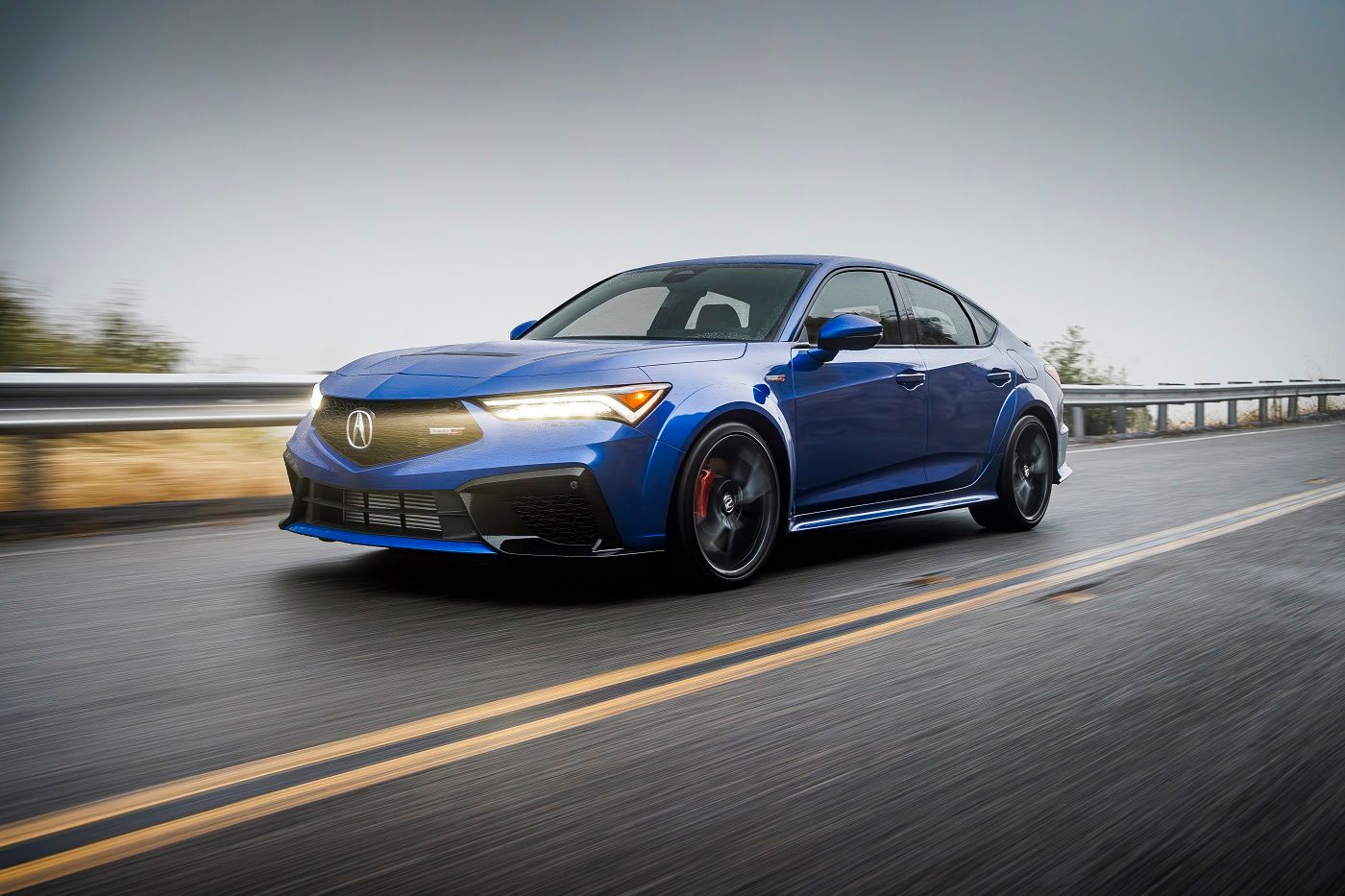
When it hit the market in 1985, the Acura Integra became an instant favorite among fans of affordable sports cars, and its popularity endures. Known for Japanese engineering quality and a smooth ride, the 1996 Integra GS-R, for instance, comes with a 1.8-liter inline-four engine producing 142 to 170 horsepower, depending on the model.
This lightweight car (2,480 pounds) is a thrill to drive on winding roads, with its nimble handling slightly offset by minor understeer—perfect for a bit of tire smoke on spirited drives. Though it has front-wheel drive rather than the more sought-after rear-wheel-drive setup, it stands alongside classics like the Alfa Romeo GTV 3.2 as a top-notch front-wheel-drive sports car. It may not boast the highest horsepower, but the Integra’s affordability and driving dynamics make it a fantastic choice for those seeking an engaging sports car on a budget.
The Acura Integra GS-R is a revered model in the automotive community, particularly among enthusiasts who appreciate its blend of performance, style, and affordability. Launched in the early 1990s, the Integra quickly established itself as a benchmark in the compact sport compact segment, particularly during its third generation, which ran from 1994 to 2001.
The GS-R variant, in particular, became a symbol of the brand’s commitment to producing fun-to-drive vehicles that didn’t compromise on practicality or reliability. With its sporty design and spirited performance, the GS-R remains an iconic choice for those seeking an engaging driving experience.
At the heart of the Integra GS-R is its powerful engine, a 1.8-liter DOHC inline-four known as the B18C1. This engine was a standout feature, producing 170 horsepower and 128 lb-ft of torque, which provided lively acceleration and a thrilling driving experience.
One of the defining characteristics of the GS-R was its high-revving nature, allowing drivers to extract every bit of power from the engine while enjoying a dynamic soundtrack. Paired with a close-ratio five-speed manual transmission, the GS-R delivered a spirited performance that set it apart from competitors in the segment. The well-tuned chassis and lightweight design contributed to the Integra’s impressive handling, making it a joy to drive on twisty roads or at the track.
The design of the Acura Integra GS-R is another highlight, showcasing a sleek and sporty aesthetic that appealed to a broad audience. The distinctive front fascia, characterized by sharp headlights and a bold grille, gave the GS-R a confident presence on the road.
The flowing lines and compact dimensions enhanced its sporty profile, while features like a rear spoiler and side skirts further emphasized its performance-oriented character. Inside, the GS-R offered a driver-focused cockpit with supportive seats, intuitive controls, and a well-laid-out dashboard. The use of quality materials, along with practical features like rear seats and a decent trunk space, made the Integra a versatile choice for everyday use.
Handling was a hallmark of the GS-R, thanks in part to its independent suspension setup. The front MacPherson struts and rear double-wishbone design provided a well-balanced ride, allowing the car to find corners with confidence and precision. The GS-R also featured a sport-tuned suspension, which enhanced its agility without sacrificing ride comfort.
This combination of performance and comfort made the Integra GS-R an appealing option for those who wanted a sporty car that could also serve as a daily driver. Its lightweight construction and responsive steering created an engaging driving experience, earning it accolades from automotive journalists and enthusiasts alike.
The Acura Integra GS-R quickly gained recognition in motorsports, particularly in mateur racing and autocross events. Its combination of lightweight design, responsive handling, and reliable engine made it a popular choice for competitors. Many enthusiasts began to modify their GS-Rs for enhanced performance, leading to a vibrant aftermarket scene that supported a variety of upgrades, from exhaust systems to suspension kits. The Integra became a platform for creativity among car enthusiasts, allowing them to tailor their vehicles to their personal preferences and driving styles.
As the years passed, the Integra GS-R’s reputation for reliability and performance solidified its status as a classic. Many owners reported minimal issues with their vehicles, thanks in large part to Acura’s commitment to engineering excellence. This dependability, combined with the car’s engaging driving dynamics, contributed to its popularity in the used car market.
Enthusiasts sought out well-maintained examples of the GS-R, appreciating its performance capabilities and distinctive character. The Integra became a sought-after vehicle for collectors and fans of the sport compact genre, and its legacy continues to thrive within the automotive community.
Despite its many strengths, the Acura Integra GS-R is not without its limitations. While the front seats are generally comfortable and supportive, rear-seat space can be somewhat cramped for taller passengers. Additionally, the trunk capacity is modest, which may pose challenges for those requiring ample cargo space.
Furthermore, some modern features found in today’s vehicles, such as advanced infotainment systems and driver assistance technologies, are absent in the GS-R, which may deter buyers accustomed to more contemporary conveniences. Nevertheless, for many enthusiasts, these drawbacks are easily outweighed by the car’s thrilling driving experience and charismatic personality.
The influence of the Acura Integra GS-R extends beyond its own model range; it has left a lasting legacy within the automotive industry. The GS-R helped solidify Acura’s reputation as a manufacturer of sporty, reliable vehicles and contributed to the popularity of the compact sport compact segment. Its success in motorsports and tuning communities has inspired subsequent generations of vehicles, paving the way for modern performance-oriented compact cars that continue to push the boundaries of engineering and design.
Looking to the future, the Integra nameplate has made a comeback with the introduction of the new Acura Integra in recent years, which aims to capture the spirit of its predecessors while incorporating modern features and technologies. This revival has sparked renewed interest in the Integra legacy, as enthusiasts and newcomers alike explore the evolution of this iconic model. The new Integra strives to honor the performance heritage of the GS-R while appealing to a new generation of drivers seeking a blend of style and practicality.
The Acura Integra GS-R remains an enduring icon of the sport compact genre, celebrated for its combination of performance, style, and reliability. With its powerful engine, engaging driving dynamics, and well-crafted interior, the GS-R offers a compelling experience that continues to resonate with automotive enthusiasts.
Its legacy in motorsports and the tuning community further solidifies its status as a beloved classic. Today, the GS-R serves as a reminder of Acura’s commitment to producing exciting and reliable vehicles that inspire passion among drivers. As the Integra nameplate continues to evolve, the spirit of the GS-R lives on, ensuring that this iconic model will forever hold a special place in the hearts of car enthusiasts around the world.
2) Infiniti G37 Coupe
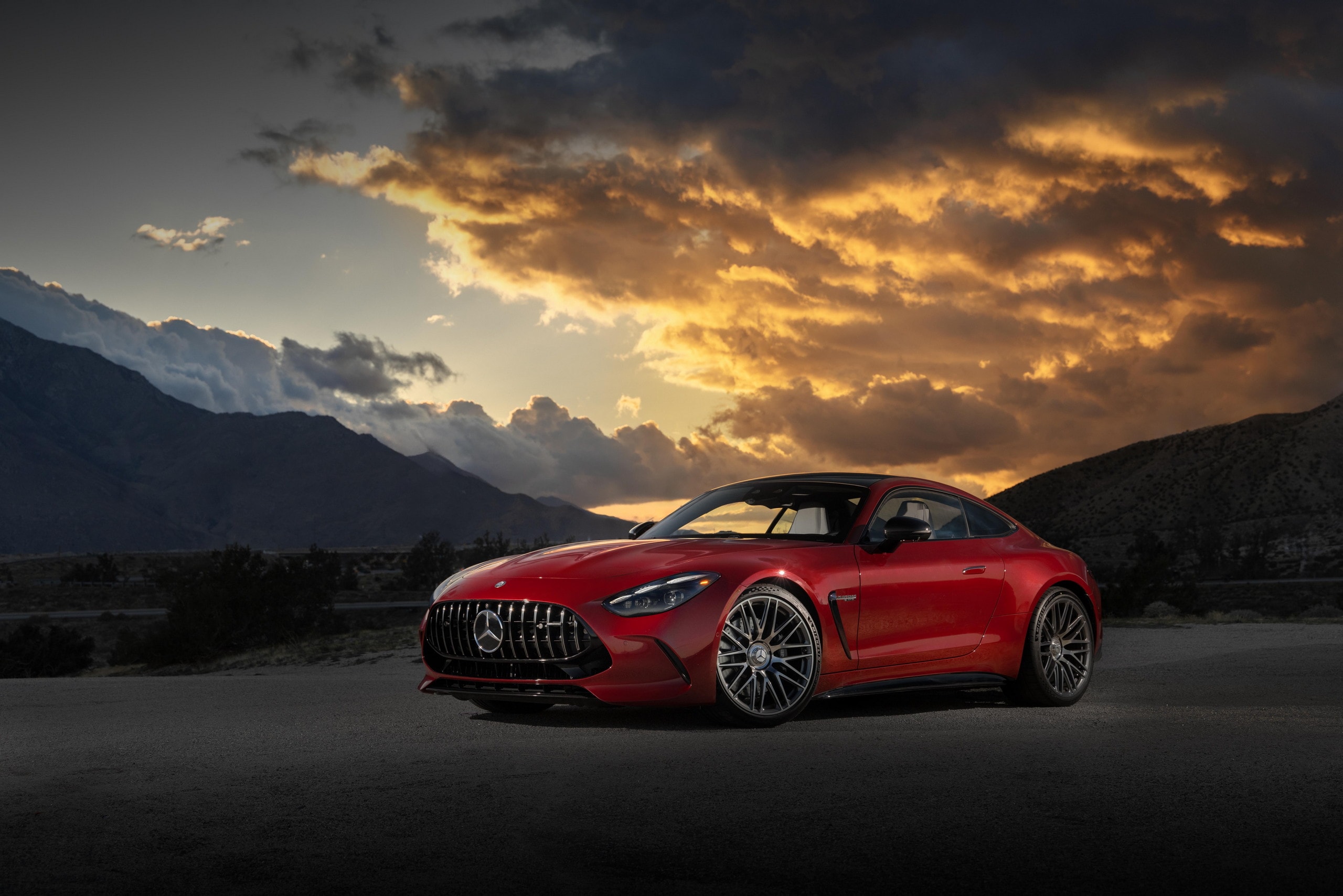
Though it looks more like a luxury sedan, the Infiniti G37 Coupe blends sophistication with sporty flair. This car offers a taste of luxury along with the excitement of a sports car, and with four seats, it’s also practical for daily use, even if the back seats are a bit snug.
When Infiniti introduced the G37, there weren’t many cars that straddled the line between sports car and daily driver as effectively—at least not without the luxury price tag of an Audi A5. It sits between the aggressive Nissan 350Z and a traditional luxury sedan, offering a balanced option for drivers who want performance without sacrificing comfort.
The G37 boasts a powerful 3.7-liter V6 engine, an all-wheel-steering setup, and a lower body profile than its predecessor, the G35. With a semi-luxurious interior, it’s an ideal option for those looking to transition from a sensible vehicle to a fun, affordable sports car with everyday usability.
The Infiniti G37 Coupe, a blend of luxury, performance, and style, has long been a popular choice among car enthusiasts for its distinctive characteristics and balanced design. First launched as part of Infiniti’s G series, the G37 Coupe debuted in 2008 and quickly gained traction due to its powerful engine, advanced features, and eye-catching aesthetics.
Powered by a 3.7-liter V6 engine, the G37 Coupe delivers an impressive 330 horsepower, placing it firmly in high-performance coupes. Its acceleration is smooth yet potent, with a zero-to-sixty time of around 5.5 seconds, offering a thrill for those who crave an engaging driving experience. Coupled with either a seven-speed automatic or a six-speed manual transmission, the G37 offers options to suit different driving styles. The automatic transmission is both responsive and refined, while the manual transmission appeals to those who seek a more hands-on, traditional driving experience.
One of the highlights of the G37 Coupe is its sharp handling, with a well-tuned suspension system that ensures the car maintains excellent road grip even on twisty roads. The car’s rear-wheel-drive layout enhances its sporty feel, delivering a driving experience reminiscent of more premium sports cars.
Additionally, Infiniti’s engineers incorporated a four-wheel active steering system, which slightly adjusts the rear wheels to improve stability and maneuverability at higher speeds, making cornering a joy rather than a challenge. The G37’s steering is precise, with just the right amount of feedback, creating an immediate connection between driver and road. The firm yet forgiving ride quality strikes a balance that many luxury sport coupes strive for, making it enjoyable for both everyday commutes and spirited weekend drives.
The interior of the G37 Coupe reflects Infiniti’s commitment to luxury and driver-focused design. Premium materials like leather and aluminum accents create a refined environment, while the seats are both supportive and comfortable, making longer journeys more enjoyable. The cockpit is designed to keep the driver at the center of the action, with all essential controls positioned intuitively. A seven-inch display sits prominently in the center console, featuring Infiniti’s user-friendly navigation and infotainment system.
While it may not have the technological advancements of modern systems, it provides a straightforward and responsive experience that remains functional and visually appealing. The audio quality is also impressive, with an available Bose sound system that provides clear, powerful sound.
In terms of practicality, the G37 Coupe offers decent trunk space for a coupe, with about 7.4 cubic feet of cargo capacity, enough for a couple of suitcases or grocery bags. The rear seats, while less spacious, provide an extra layer of versatility, though they are best suited for short trips or additional storage rather than regular seating.
Fuel economy, while not class-leading, is respectable, averaging around 18 mpg in the city and 26 mpg on the highway, a fair trade-off for the performance-oriented V6 engine under the hood. This places it in a reasonable range compared to other sports coupes of its time, balancing power and efficiency in a way that allows owners to enjoy spirited driving without excessive fuel costs.
Reliability has proven to be a strong suit for the G37 Coupe, with many owners praising its durability and low maintenance needs. Infiniti’s reputation for crafting robust engines is evident here, as the VQ37VHR engine used in the G37 Coupe is known for its longevity and resilience under regular use. Routine maintenance, such as oil changes, is relatively affordable, and the car’s straightforward design means there are fewer complex parts that could lead to costly repairs.
For those considering long-term ownership, the G37 Coupe offers a strong balance of performance and reliability, with many examples reaching well over 100,000 miles with minimal issues. Resale value has also remained respectable, as the G37 Coupe’s reputation for reliability and performance continues to attract interest in the used market.
In terms of safety, the G37 Coupe comes equipped with a suite of features that enhance driver confidence on the road. It includes front and side-impact airbags, anti-lock brakes, traction and stability control, and a tire pressure monitoring system.
Though advanced driver-assistance features like lane-keeping assist and adaptive cruise control are absent, the vehicle still provides a safe and reassuring driving experience. The solid construction of the chassis, combined with Infiniti’s engineering, ensures that the G37 Coupe can handle both city traffic and highway cruising with ease. Crash-test ratings have been favorable, and the car’s structure is designed to protect occupants in the event of a collision, offering peace of mind to both drivers and passengers.
The G37 Coupe’s exterior design is another significant draw, embodying a balance of elegance and aggression that makes it stand out on the road. Infiniti’s designers created a sleek, streamlined body with flowing lines and a bold front grille that captures attention without being overly flashy.
The Coupe’s silhouette is low and wide, giving it a poised, athletic stance that hints at its performance capabilities. The large, intricately designed headlights and the dual exhaust at the rear add to the car’s sporty appeal, while subtle touches like chrome accents and carefully sculpted contours showcase Infiniti’s attention to detail. The G37’s design has aged well, remaining visually appealing even years after its release.
However, it’s essential to consider that the G37 Coupe does come with a few drawbacks. Interior space, particularly in the back seats, is limited, making it less ideal for those who frequently carry multiple passengers.
The infotainment system, while functional, lacks the advanced connectivity features and touch interfaces found in newer vehicles, potentially feeling a bit outdated to tech-savvy drivers. Additionally, the G37 Coupe’s ride can feel firm over rough roads, though it handles most surfaces with poise. The road noise is also noticeable at higher speeds, which might detract from the overall luxury experience for some drivers. Nevertheless, these minor shortcomings do little to overshadow the G37 Coupe’s strong points.
For buyers looking at the Infiniti G37 Coupe today, it remains a highly appealing option in the used luxury sports car market. Its combination of robust performance, enduring design, and reliable engineering make it a standout choice for enthusiasts and casual drivers alike.
While newer models may offer additional tech features and slightly better fuel economy, the G37 Coupe delivers a driving experience that is both engaging and satisfying, reminding us of the charm and character of well-crafted sports coupes. Whether it’s for daily commuting or weekend drives, the G37 Coupe manages to provide a balanced mix of luxury and sportiness that few cars achieve as effectively.
The Infiniti G37 Coupe holds a unique place in the sports coupe segment. It balances luxury and performance, offering a powerful V6 engine, stylish design, and driver-focused features that appeal to enthusiasts and professionals alike. Its reliability, low maintenance costs, and enduring design make it a strong contender for those seeking a well-rounded, engaging driving experience.
While it may lack some of the tech features found in newer models, the G37 Coupe’s solid engineering and balanced ride make it a car worth considering. Its enduring popularity speaks to its appeal, and it remains a rewarding choice for anyone who values a blend of performance, luxury, and style in a timeless package.
1) Mitsubishi 3000GT VR-4
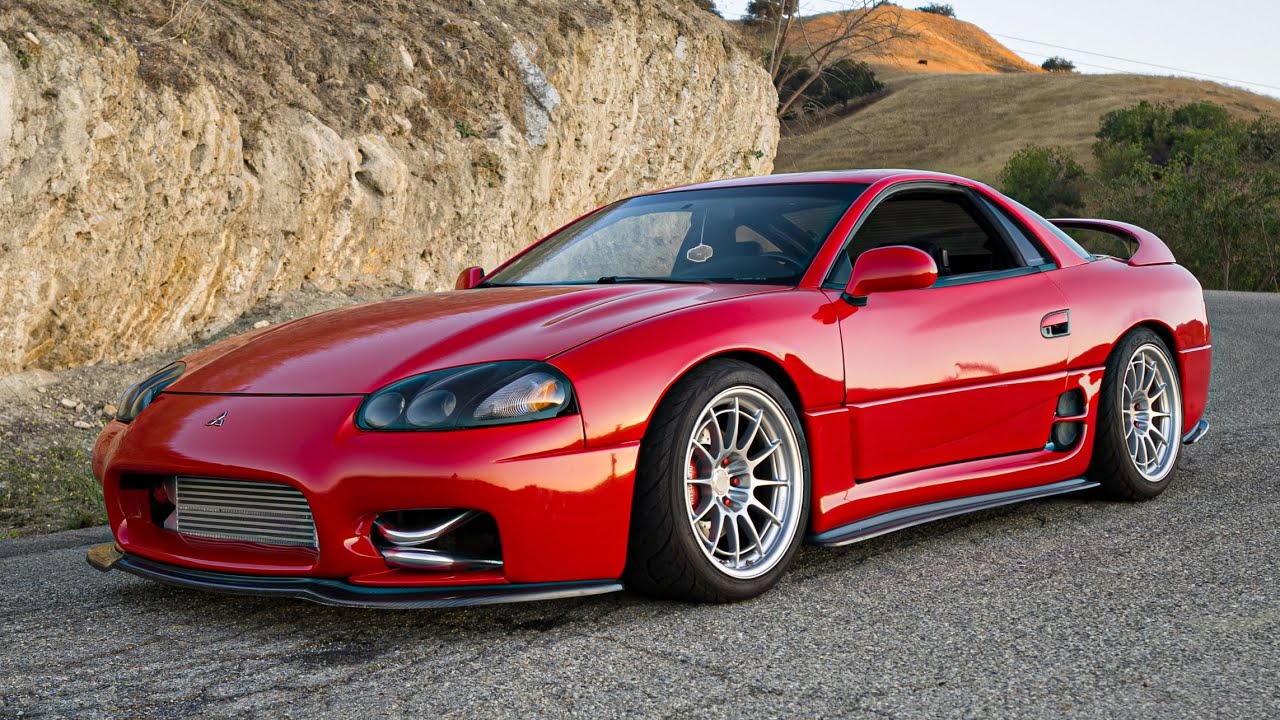
The Mitsubishi 3000GT VR-4 stands out as a car that was well ahead of its time. Its design is both sleek and futuristic, with an aggressive yet refined aesthetic. The 3000GT VR-4 has smooth, sweeping lines, a stance built for hugging the road, and classic pop-up headlights that, when raised, offer other drivers a false sense of its capabilities.
In reality, this is a powerful machine, and those front and rear spoilers serve to keep the car planted on the road at high speeds, offering drivers a thrilling experience with a precision-focused build made for true driving enthusiasts.
Under the hood, the 3000GT VR-4 houses a potent 3-liter V6 engine that can produce up to 324 horsepower. This setup makes for impressive acceleration and the ability to reach significant speeds quickly. The car’s four-wheel steering and adaptive suspension take the handling experience to the next level, allowing it to perform at its best on both the track and winding roads.
These features make the 3000GT VR-4 a joy to drive, with crisp handling and precision that few cars of its era could match. Released in 1994, the 3000GT VR-4 was a true technological marvel, with a combination of features that made it stand out against other sports cars at the time. Today, while some might consider it somewhat dated, it remains an absolute gem to drive and admire.
The Mitsubishi 3000GT VR-4 is more than just a fast car; it was a trailblazer that brought a unique approach to the sports car world. While other manufacturers have since introduced their own innovations, the 3000GT VR-4 deserves to be remembered and cherished for its contribution to automotive design and performance.
And, for a sports car that delivers this level of driving experience and can still be found for under $20,000, it offers incredible value for its price. The 3000GT VR-4 continues to capture the hearts of those who appreciate the finer points of a well-engineered, performance-focused sports car, making it a legend that should not be forgotten.

